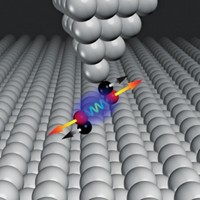Advertisement
Grab your lab coat. Let's get started
Welcome!
Welcome!
Create an account below to get 6 C&EN articles per month, receive newsletters and more - all free.
It seems this is your first time logging in online. Please enter the following information to continue.
As an ACS member you automatically get access to this site. All we need is few more details to create your reading experience.
Not you? Sign in with a different account.
Not you? Sign in with a different account.
ERROR 1
ERROR 1
ERROR 2
ERROR 2
ERROR 2
ERROR 2
ERROR 2
Password and Confirm password must match.
If you have an ACS member number, please enter it here so we can link this account to your membership. (optional)
ERROR 2
ACS values your privacy. By submitting your information, you are gaining access to C&EN and subscribing to our weekly newsletter. We use the information you provide to make your reading experience better, and we will never sell your data to third party members.
Analytical Chemistry
Molecules Vanish In Nanotubes
Molecular dipoles induce mirror-image nanotube dipole that screen molecules from IR light
by Mitch Jacoby
May 23, 2011
| A version of this story appeared in
Volume 89, Issue 21

Encapsulating molecules in single-walled carbon nanotubes (SWNTs) can cause the molecules to become nearly invisible as far as their vibrational signatures are concerned, according to a study led by researchers at Temple University (J. Am. Chem. Soc., DOI: 10.1021/ja108903u). The results indicate that infrared spectroscopy cannot be used to interrogate these types of confined molecules in a straightforward manner. Carbon nanotube “peapod” systems are being studied for use in numerous applications, including asymmetric surface catalysis and safe handling of propellants. Encapsulated compounds are routinely analyzed via microscopy and spectroscopy. Yet according to Temple’s Dmitry V. Kazachkin, Eric Borguet, and coworkers, the intensity of the nanotubes’ screening effect has not been studied in detail. Through experimental and computational analysis of acetone, diethyl ether, and n-heptane adsorbed inside SWNTs, the team found that the molecules’ electric dipoles induce an electronic rearrangement in the nanotube walls that mirrors and effectively cancels the molecular dipole. This screening action reduces the adsorbed molecules’ IR absorption intensity by more than a factor of 10 relative to molecules that are adsorbed externally, they say.




Join the conversation
Contact the reporter
Submit a Letter to the Editor for publication
Engage with us on Twitter